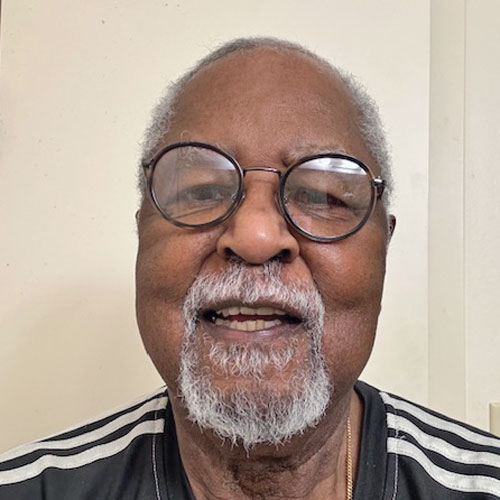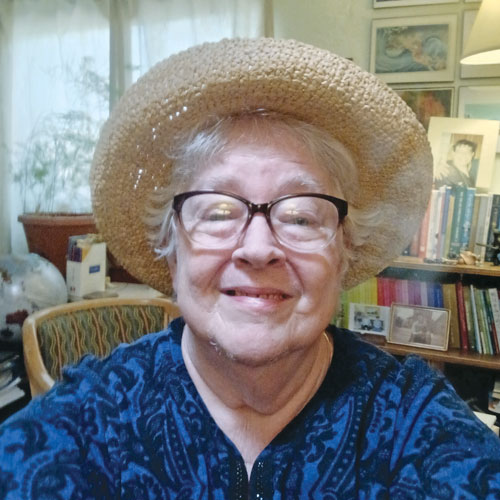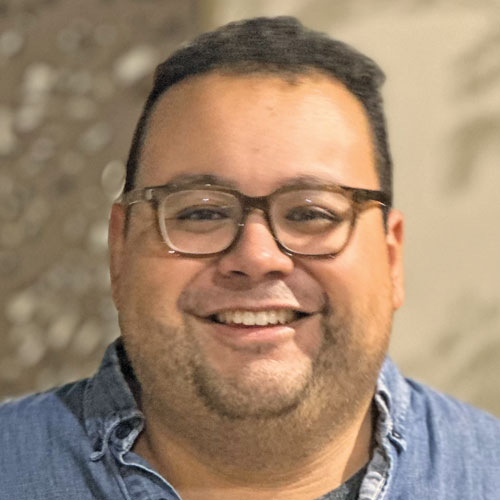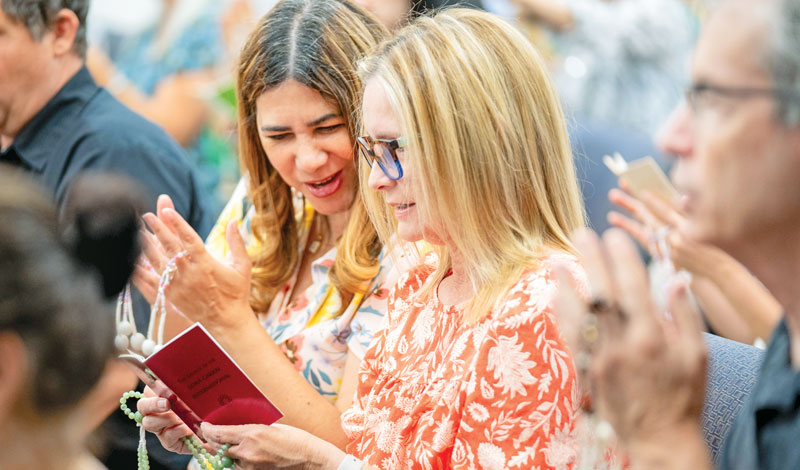In this essay, Ikeda Sensei writes of the power source of victory—gongyo. This essay was translated from the February 10, 2006, issue of the Soka Gakkai’s daily newspaper, Seikyo Shimbun.
Some members from Chiba sent me a photo of this year’s [2006] first sunrise over the Pacific Ocean. My wife, Kaneko, and I often admire this beautiful picture together.
The Japanese author Doppo Kunikida (1871–1908), who was born in Choshi, Chiba Prefecture, wrote a short story titled “Sunrise.” I found this piece so inspiring that I went on to read many of his other works in my youth.
“Sunrise” tells of a meeting between seven or eight young Japanese men during the Meiji era (1868–1912), most of whom were graduates from prestigious foreign universities such as Oxford and Harvard. They ask a newcomer among them where he has graduated from. His reply: Oshima Elementary School—an elementary school that no one has ever heard of. As the others begin to smirk, the youth responds with dignity and firmness, telling them the history of the school.
According to this account, the principal was Shin’ichi Oshima and its founder, Gonzo Ikegami. In his youth, a despairing Gonzo had gone to the top of a high cliff with the intention of killing himself when an old man approached him and said, “Look, the sun is about to rise!”[1] It was the first glorious sunrise of the New Year. “Don’t forget this sunrise!” he seemed to imply. “Live with courage, so that you can see the sun rise each day!” Gonzo’s encounter with this old man—who was called Jinzo Oshima—changed his life. Taking the words “Look at the sunrise!” as his anchor and inspiration, Gonzo worked hard and made his fortune in farming. When old Oshima passed away, Gonzo built the Oshima Elementary School out of gratitude to him in the small village where they lived, and Oshima’s son Shin’ichi became the school’s principal. To this day, the youth explains, the words “Look at the sunrise!” live on as the school’s motto and creed.
This is just one small scene from the story, but I wanted to share it with you today.
“Look at the sunrise!”—to me these words also seem to be a call to make the sun rise in one’s own heart.
Nichiren Daishonin likens the magnificence of chanting Nam-myoho-renge-kyo to the sunrise. He writes: “When the sun rises in the eastern sector of the sky, then all the skies over the great continent of Jambudvipa in the south [i.e., the entire world] will be illuminated because of the vast light that the sun possesses” (“The Tripitaka Master Shan-wu-wei,” The Writings of Nichiren Daishonin, vol. 1, p. 169).
Gongyo, which forms a fundamental basis of our Buddhist practice, could be described as a ceremony in which we bring the primordial sun of Buddhahood to rise brightly in the vast skies of our lives each day.
In The Record of the Orally Transmitted Teachings, Nichiren cites this significant passage from a Buddhist commentary: “Morning after morning we rise up with the Buddha, evening after evening we lie down with the Buddha. Moment by moment we attain the way, moment by moment we reveal our true identity” (OTT, 83). Morning and evening, we vigorously perform gongyo in front of the Gohonzon; as such, we are always living “together with the Buddha”—this is the teaching of Nichiren Buddhism. Further, at each moment we awaken to the great life force of Buddhahood that has been within us from time without beginning and powerfully manifest it in our lives.
Morning and evening,
joyously attune your lives
to the melody of the universe,
as you recite the “Expedient Means”
This is a poem that I composed some years ago about gongyo. From the autumn of 2004, the Soka Gakkai inaugurated a new format for gongyo comprising the recitation of a portion of the “Expedient Means” chapter and the verse section of the “Life Span” chapter, along with the chanting of Nam-myoho-renge-kyo. The reason for this simplification of gongyo was to create an even greater current of worldwide kosen-rufu in the 21st century. Indeed, because of requests by many members, the SGI organizations outside of Japan led the way in adopting this new format.
In an explanation of gongyo, Nichikan Shonin (1665–1726), who is known as a great restorer of Nichiren Buddhism, describes the chanting of Nam-myoho-renge-kyo as the “primary practice” and the recitation of the “Expedient Means” and “Life Span” chapters of the Lotus Sutra as the “supplementary practice,” or “supporting practice.”
The Daishonin writes that in the midst of the life-threatening Tatsunokuchi Persecution, he “recited the verse portion of the ‘Life Span’ chapter” (“The Actions of the Votary of the Lotus Sutra,” WND-1, 768). Some of his lay believers also “continued to recite the ten factors of life[2] [of the ‘Expedient Means’ chapter] and the verse section of the ‘Life Span’ chapter and chant the daimoku [Nam-myoho-renge-kyo]” (“The Fourteen Slanders,” WND-1, 756). This is almost the same as the gongyo format that we now follow.
Today, the vibrant sound of gongyo—performed with a prayer for the happiness of oneself and others—can be heard all over the world, in a total of 190 [now 192] countries and territories. Twenty-four hours a day across the planet, the voices of our members chanting Nam-myoho-renge-kyo never cease for even a moment. Despite different languages and nationalities, different customs and lifestyles, and different cultural and religious backgrounds, the network of SGI members who chant Nam-myoho-renge-kyo has spread widely throughout the globe.
How happy this would surely make Nichiren, who declared: “It is certain that widespread propagation of the Law [kosen-rufu] will eventually be achieved throughout Jambudvipa [the entire world].”[3] There is not the slightest doubt that he would unstintingly praise all of our admirable SGI members.
In practicing Nichiren Buddhism—not least when reciting gongyo and chanting daimoku—we should always be considerate of our neighbors. If our gongyo and daimoku are too loud, we may disturb them. For that reason, it might also be best to refrain from holding extended group chanting sessions in places where this could be a problem.
In the early days of my practice, I would often come home late at night and do evening gongyo. The couple who lived in the apartment next door complained more than once about my loud chanting. “My husband’s a taxi driver and he needs his sleep,” the wife would say to me. She was perfectly right, of course.
Naturally, we must rigorously rebut malicious slanders, but kosen-rufu is essentially about spreading trust and friendship. I remember with some nostalgia how I used to regularly go around to visit my neighbors and talk to them openly and honestly, thus making many a new friend and ally. There are also members who, because of their work situations, are unable to do morning and evening gongyo at those specific times. I ask that you please be flexible on this point. What matters is that we have the desire to do gongyo and chant daimoku, the desire to pray about our problems. The important thing is challenging ourselves and continuing.
The Mystic Law is absolute. The only way to tap the infinite power of the Buddha and the power of the Law is to chant and exert ourselves for kosen-rufu with the intensity of a charging lion.
When Josei Toda’s business was in financial straits, I worked furiously to help him surmount the crisis. Pushing myself to the limit day after day took a serious toll on my health. I was a physical wreck. One day, Mr. Toda called me into the Gohonzon room and said: “Daisaku! You haven’t got an ounce of life force! You’re not going to win any battles in that condition. Let’s do gongyo together!” He took me sternly to task as if seeking to banish my weak life state and free me from the devil of illness. Tears filled my eyes at my mentor’s compassion. As I sat in front of the Gohonzon and chanted alongside Mr. Toda—my voice and heart attuned to his—a powerful fighting spirit and a surge of courage welled up inside me.
During that tumultuous period, I had many opportunities to do gongyo with my incomparable mentor. They are now a precious treasure and a memory that continues to resonate in my life to this day, filling me with profound and undiminishing gratitude.
A “fighting” gongyo is the inexhaustible wellspring of absolute victory in both life and the struggle for kosen-rufu.
Through the Buddhist doctrine of three thousand realms in a single moment of life, Nichiren teaches that a great transformation in our attitude or mind can bring about a transformation in all phenomena comprising the three thousand realms. When our fundamental mindset changes, we ourselves change. And when we change, the environment and the world change, too.
The source of this great transformation is found nowhere but in a radical deepening of our own prayer to the Gohonzon. Prayer to the Gohonzon is completely different from that found in a dependent, supplicant faith; we do not weakly and passively beg someone for salvation or assistance. Prayer in Nichiren Buddhism is fundamentally a vow. It is a pledge or commitment to follow a chosen course of action; it is a declaration to challenge a clear objective. As such, how could anything be more wonderful than the vow to realize our personal human revolution and actualize kosen-rufu with its goal of world peace?
While confronting and challenging our own problems, we pray for the happiness of others and for the victory of Soka. We pray to reach organizational activity goals. In our struggle against the three powerful enemies, we pray passionately that justice will definitely prevail; we also take bold and courageous action toward that end. Because we have steadfastly advanced based on such committed prayer and a “fighting” gongyo, the Soka Gakkai has won over all malicious machinations against it and triumphed in every struggle for the sake of the Law. That is why our members brim with boundless wisdom and strength and overflow with benefit that enables them to be victorious.
There is no such thing as retreat for a man of prayer,”[4] declared Mahatma Gandhi.
February, the Soka Gakkai’s traditional month of propagation, is here again, and our members everywhere are exerting themselves wholeheartedly to share Nichiren Buddhism with others. The fundamental source of victory for that very first February Campaign back in 1952—a campaign that triggered the dynamic growth of kosen-rufu—was also earnest prayer based on a firm resolve to be victorious without fail.
The Daishonin writes, “Employ the strategy of the Lotus Sutra before any other” (“The Strategy of the Lotus Sutra,” WND-1, 1001). Deeply engraving this passage in our hearts, let us once again rise into action for the sake of victory, a brilliant future and the fulfillment of all our desires.
Onward! Forward! Let us forge ahead with the solid unity of “many in body, one in mind,” powered by a gongyo that is vibrant and vigorous like the rhythm of a galloping horse. Let’s make today, tomorrow and this year a resounding victory by challenging ourselves to the utmost on all fronts. Those who continue to strive and challenge themselves are happy, as are those who win. This is a fact of life.
I once presented this poem to my mentor. It is a poem infused with my vow:
I will walk the disciple’s path
fiercely praying
and taking action.
Morning and Evening, Together With the Buddha
Members share why they recite gongyo twice a day and how it’s transformed their lives.
Gongyo Has Given Me Unshakable Faith

James (Jim) Cheeks
San Antonio, Texas
When did you start practicing Buddhism and how did you learn how to recite the sutra?
Although my wife initially introduced me to Buddhism in Japan in 1967, I learned from the young men who came over to my place almost every morning to do gongyo together at the Tachikawa Air Force Base. Those visits solidified my practice. I feel so much gratitude for the many people who supported me in those early days. It was difficult for me to learn gongyo, but once I got it, it became very natural to do.
Do you remember when you started doing gongyo consistently?
There was an incident that I remember clearly that changed me. On January 10, 1969, our first son was born. I was so happy, but, soon after, I got orders to go back to Vietnam and this time it was to North Vietnam. Before I left, I got guidance. The senior in faith told me to first chant that I would not be put in a position to kill anyone or be killed. Second, he told me to chant as much as I could.
Vietnam was hell. I had narrowly escaped death one day, but my friend died. To numb my pain, I started drinking a lot.
My bunkmates saw me sitting on the bed one day, chanting, tears streaming down my face. They said I had been sitting there for about an hour. I had a picture of my wife on one side of the Gohonzon and a picture of my son on the other. As I looked at my family’s photos, I realized that they needed me, and the solution was not in the bottle. I decided that I would go home to them alive. From that point, I never missed gongyo, and I stopped drinking. That is when it sunk in—gongyo results in “casting off the transient and revealing the true.” After that, I tried to share Buddhism with the people around me and did gongyo proudly, not worrying about who would hear me.
What do you feel is the benefit of doing gongyo and chanting every day?
Having a happy life. There is a fleeting happiness and there is a happiness that lasts. When you do gongyo consistently, you develop a life of absolute happiness.
A youth once asked me, “Mr. Cheeks, are you scared of skipping gongyo?” and I said: “No, I’m not. But I know I won’t have the same life force, and I won’t be able to help you if I don’t.”
Something a senior in faith said to me stuck with me. He said, “How are you going to help somebody if you don’t do gongyo, man?” Because I have developed a consistent practice, I’ll tell you what, I’ve got unshakable faith.
‘I Still Haven’t Found the Limit’

Marjorie Allen
Albuquerque, New Mexico
What was your life like when you encountered Buddhism?
After the death of my sister, I moved from Chicago to Albuquerque to be with my parents. My marriage was also falling apart so I brought my two kids with me. Within a month of moving, I was introduced to Buddhism by two young men. This was 1972.
My sister had taken her life, and I felt like I was carrying her pain with me. But chanting immediately lifted the pain. It was such a big internal benefit that I knew right away this was something I wanted to continue. Everything that I had encountered prior to Buddhism had limits, so I kept chanting to find the limit in Buddhism.
How did you learn gongyo? How were you encouraged to do it?
At the time that I joined, there were many other new members, so we were all learning gongyo together. We would drop over at each other’s houses and practice together and help each other. I remember even taking my gongyo book on the bus so that I could practice on my commute.
I was told early on that reciting the sutra is the way to open your life to the effect of chanting Nam-myoho-renge-kyo—it helps you see and feel your own Buddha nature. It opens your life to perceive reality based on wisdom. Because of that encouragement, I consistently did gongyo from the start. I was desperate to tap into my enlightened nature.
Do you have an experience about the power of gongyo?
I could tell you about this one time that gongyo played a crucial role in the outcome. There was a point early in my practice where things got really bad. I was being sued for money, and I didn’t have any. My kids were sick with the chicken pox, so I couldn’t go to school because I had to take care of them. I was also failing my courses. Everything was falling apart, and I saw no way out.
I wanted to change my situation, but I couldn’t see how. So I decided that I would close the garage and turn on my car and that was how I was going to go. I went to the garage. To close the door, I had to pull down the rope. I pulled the rope, jumped up and down, put my whole weight on it… and no matter how hard I tried, I couldn’t pull it down. I got so mad and said to myself. I know how I’m going to make this door go down! I’m going to do gongyo!
I started gongyo and in the middle of it, I thought to myself: What are you doing? That is so absurd… You can chant to get the garage door to come down but you can’t change this stupid situation you are in?
It was like I immediately saw through my own illogic. That’s what gongyo does: It helps you see through your own nonsense. And the impulse to harm myself completely vanished. I went to check the garage door later and sure enough it came right down. It never got stuck again after that.
How would you explain gongyo and what it means to you?
In speaking about the verse section of the “Life Span” chapter, which we recite every morning and evening, Ikeda Sensei wrote: “Nichiren stresses the profound significance of this, interpreting this part of the verse section from beginning to end as both an ode lauding the life of the Buddha, who ceaselessly strives to relieve people’s suffering, and at the same time an ode to our own lives, celebrating that all living beings of the nine worlds are inherently Buddhas” (September 2024 Living Buddhism, p. 55).
It’s a song we sing to heal ourselves and heal the world. Every morning and evening, you are a part of an incredible orchestra that includes you, your gongyo, the Gohonzon and the universe.
If you think something, it has a certain amount of power. If you say it, it has even more power because you have communicated it to others. But if you build something, it’s there. It’s solid. Doing gongyo consistently is like constructing a solid self, a foundation for a happy life.
Having a consistent practice has enabled me to experience a progression of confidence in myself. That’s the greatest benefit of my practice. And I still haven’t found the limit.
It’s Important to Carve Out Time for Gongyo

Ayesha Mohanty
Washington, D.C.
How were you introduced to Buddhism, and was it a challenge for you to learn gongyo?
My mother was introduced to Buddhism by a friend. I was 6 and battling a lot of health issues at that time. I had been listening to my mother chant and recite the sutra for two to three months every day when I attended my first meeting. There, I did gongyo with everyone else. I remember my mom and her friends being totally surprised that I could do it. Somehow, I just picked it up from hearing it.
When did you start doing gongyo more regularly?
It definitely wasn’t right away. When you’re 6, gongyo is not the first thing you’re thinking about. During my elementary school and early teenage years, I only chanted when I faced a lot of challenges because I was told the Gohonzon is a wish-granting machine. I loved going to meetings, though, because as a future division member, I always got treats after the meetings.
I started doing gongyo regularly in my junior year of high school. I was waging an internal battle with myself and chanted to find my purpose and figure out what my next steps looked like in terms of selecting colleges and my career path. But in the last year and a half, I haven’t missed a single day.
Was there something that happened that made you decide not to miss a gongyo?
I’m currently the youngest lawyer on my team at an
international organization. There have been many times where I could have let other people’s life condition completely take over my emotions. But when I got this job, I made a determination to do gongyo every day, and I think it came from a feeling of wanting to take full responsibility for my life. Gongyo gives me the courage to win every day no matter what. I want to do my best at my place of mission and be valuable so I can represent Sensei and his vision for peace.
What would you say is the biggest difference you see in your life?
I think the difference is in my capacity. My life really opened up. In the morning, gongyo and daimoku is the only time I get for myself. The entire day goes by, and I’m busy with one thing or another so that time for my own life is really important. I also see a shift in the way I approach challenging circumstances. Previously, it would be easy for other people’s life condition to rub off on me and, because I’m a sensitive person, I would dwell on it for several days. But now, I don’t let anyone’s life condition dictate mine.
Currently my team is hosting a big inaugural conference. There are many things that can go wrong coordinating so many people and working with so many personalities. One of my team members asked me the other day, “Are you stressed?” and I wasn’t. I asked her if I should be. I know it’s because of my daily practice.
What do you say to others who can’t find time to do gongyo?
The only way to expand your life is if you create time to do gongyo. I truly believe that. As youth, we have different work schedules and personal commitments and to find time to chant can be hard, but it’s important to carve out the time.
I was chanting and doing gongyo with one young woman every morning when she was looking for a job. I think it’s important to do it together and support each other in that way.
Also, reading Sensei’s guidance is so important. For example, a recent the Living Buddhism carried a speech by Sensei, titled “Gongyo Is a Grand and
Noble Right.” He says: “When we carry out gongyo and chant daimoku before the Gohonzon, our individual existence is perfectly harmonized with the universe” (August 2024 Living Buddhism, inside front cover). I read that passage together with a young woman when I visited her.
Gongyo helps me recognize that there are more possibilities than what I can see in my limited understanding of reality. Whenever I recite the sutra, I’m making a vow that I will be victorious, no matter what.
The Greatest Benefit Is Taking Responsibility for My Life

Juan Sorto Jr.
Los Angeles
Can you tell us about your journey in practicing Buddhism?
I was introduced on campus at school. I was 22 and going through a lot because of the number of responsibilities that I had in my life, particularly in supporting my mother who was sick. My immediate family members and I were also facing some discord, and I was also trying to decide what to pursue after college. I was emotionally exhausted, depressed and anxious. When I went to my first campus club meeting, I remember feeling like the people in the meeting were so invested in who I was. I remember crying because I had never felt so acknowledged in my life.
Over the next couple of months, I started chanting every day, morning and evening. When I first chanted to the Gohonzon, I remember feeling all of the emotional pain lift from my life.
As far as gongyo, it was difficult for me because of the foreign pronunciations and how fast people would recite gongyo at meetings. I got the impression that I had to do it just as fast. I was then told that I could go at my own pace.
On August 1, 2019, I became an SGI member and received the Gohonzon. As soon as I did, I got all the support from my district leaders and young men’s leaders. A few times a week, I would get together with someone from the district or the young men’s leaders and practice reciting the sutra. I remember one of my district leaders told me that many of the pronunciations in gongyo resemble Spanish words. He was right, many words reminded me of words in Spanish.
When I would practice on my own, I would do it very slowly and enunciate as best as I could. Within two months of practicing, I felt comfortable doing gongyo on my own.
How do you feel when you do gongyo?
I always feel like I’m unleashing something in my life—the Buddha nature within myself. I can then reflect on what I’m going through, tackle my problems and pray about how I can encourage others. I’m able to build bonds of friendships with people who I never assumed I would be friends with.
On the days I don’t do gongyo, I can tell my life condition is low. If I spend some time in the morning to do gongyo before I leave, it makes a difference in my interactions with others. Doing morning and evening gongyo gives me the life force to tackle all of my daily challenges.
Chanting in the evening after coming home from work is probably the hardest because I feel so exhausted and I just want to rest. But that’s the time I need it the most so I can elevate my life condition.
Any experiences on the power of daily gongyo and daimoku?
The last several months, I’ve been feeling challenged by my work relationships. Then one day I decided, I have the practice! I have faith!
When I decided to transform, I feel like my co-workers and I became closer. I realized I could be more empathetic and understand where they were coming from. Then there were times when negative things would be said, and I felt like I could steer the conversation in a different direction by being an example. While there are still challenges, I’m not swayed or drained by them. With a consistent practice, I have the life force to continue making the causes I know are right and not be influenced by the negativity of others.
What has been your greatest benefit of a daily practice?
I’ve accomplished so much in the last five years. The greatest benefit is that I learned how to take responsibility for my own life and how to be there for others—encourage others in the way they encouraged me when I first began practicing. I now feel that others’ problems are my own, and we are all in this together to win.
From the December 2024 Living Buddhism
References
- Translated from Japanese. Doppo Kunikida, “Hinode” (Sunrise), in Unmei (Destiny) (Tokyo: Iwanami Shoten, 1972), pp. 194–211. ↩︎
- This is thought to indicate the first section of the “Expedient Means” chapter, which ends with “The true aspect of all phenomena can only be understood and shared between Buddhas. This reality consists of the appearance … and their consistency from beginning to end” (Sho ho jisso. Sho i sho ho. Nyo ze so. … Nyo ze honmakkukyo to). ↩︎
- This passage is from “Oko kikigaki” (The Recorded Lectures), not included in WND, vols. 1 or 2. See Gosho zenshu, new edition, p. 1135 [Gosho zenshu, p. 816]. ↩︎
- Mahatma Gandhi, The Collected Works of Mahatma Gandhi (Ahmedabad: Publications Division, Ministry of Information and Broadcasting, Government of India), vol. 38 (November 1928–February 1929), p. 248. ↩︎
You are reading {{ meterCount }} of {{ meterMax }} free premium articles

